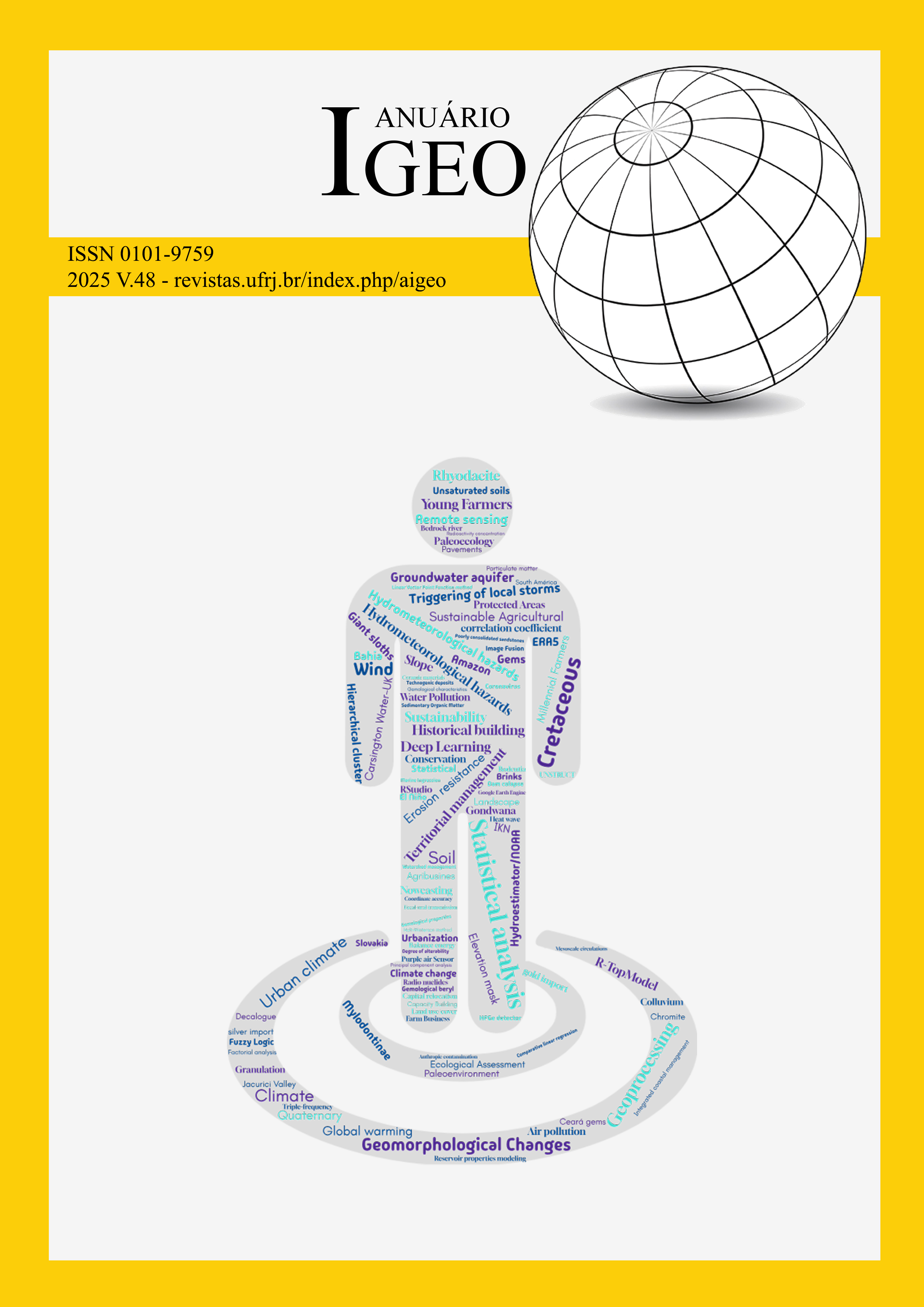Identification of Tangible and Intangible Management Conservation in Historical Mosque
DOI:
https://doi.org/10.11137/1982-3908_2025_48_62040Keywords:
Immaterial, Perceptible, HeritageAbstract
Tangible and intangible management conservation is needed to conservator historical places, this research prioritizing tangible heritage implies that the mosque is managed as a heritage building. This research is a comprehensive analysis of the management and conservation of tangible and intangible heritage in historical mosques, focusing on examples from Japan and Indonesia. It highlights the challenges of balancing functionality and authenticity in managing historical mosques and emphasizes the importance of professional and transparent mosque management. The research explores the changes in the authenticity of tangible and intangible attributes in historical mosques and the different needs and values associated with them. It also discusses the history and changes in design, materials, and function of four historical mosques, including the assessment of their authenticity at the architectural level. The role and management of the mosques are identified as crucial factors in preserving tangible and intangible heritage. The paper offers valuable insights into the preservation and management of historical mosques and their tangible and intangible heritage.
Downloads
References
Abd Rahim, S.A., Ismail, N.H. & Abd Latip, N.S. 2022, ‘Analysis of Current Condition of Heritage Masjid in Negeri Sembilan’, PLANNING MALAYSIA, vol. 20.
Ahmad, N. 2017, ‘Perayaan Grebeg Besar Demak Sebagai Sarana Religi Dalam Komunikasi Dakwah’, Jurnal Komunikasi Penyiaran Islam, vol. 1, no. 2, pp. 5-24.
Andriani, R., Rohiim, I.A., Jannah, A.Z., Balqis, F.R. & Samudro, H. 2019, ‘Integrating Islamic Aspect for Achieving Local Wisdom Principles Design in Roof Shape of Mosque, Case Study: Demak Mosque’, Proceedings of the International Conference on Green Technology, vol. 9, no. 1, 79.
Aziz, A.A. & Zulkifli, M.H. 2018, ‘The Relocation Conservation of Kampung Teluk Memali Mosque in KG. Gajah Perak to Ipoh, Perak, Malaysia’, Islamic Heritage Architecture and Art, vol. 2, pp. 181-92.
Azmi, E. & Ismail, M.Z. 2016, ‘Cultural Heritage Tourism: Kapitan Keling Mosque as a Focal Point & Symbolic Identity for Indian Muslim in Penang’, Procedia - Social and Behavioral Sciences, vol. 222, pp. 528-38.
Cabeza, L.F., de Gracia, A. & Pisello, A.L. 2018, ‘Integration of renewable technologies in historical and heritage buildings: A review’, Energy and Buildings, vol. 177, pp. 96- 111.
Dhannoon, A.A., Abdulqader, O.Q. & Al-Azawi, A.A. 2022, ‘Influences of Intangible Needs on the Architectural Expression of Tangible Culture Heritage: Comparative Study between Mosque and Church’, International Transaction Journal of Engineering, vol. 13, no. 1, pp. 1-13.
Gultekin, N.T. & Canbolat, A.N. 2018, ‘To Identification of Immovable and Intangible Cultural Values of Sacred Historical Buildings Together : Mevlana Tomb and Selimiye’, Journal of Current Researches on Social Sciences, vol. 8, no. 4, pp. 63-84.
Hakim, N. 2008, ‘Mosque Architecture Past and Present’, in S. Rudolf , Sacred Buildings, Birkhäuser, Basileia, pp. 46-53.
Husa, N.A.I. & Harun, S.N. 2023, ‘The Component of Historical Study Influencing Heritage Building Conservation Decision: A Literature Review’, International Journal of Academic Research in Business and Social Sciences, vol. 13, no. 6.
Isac, A.A. 2015, ‘Types of Religious Identities Within Romanian Muslim Communities’,
Journal for the Study of Religions and Ideologies, vol. 14, no. 41, pp. 148-73.
Lesh, J. 2020, ‘Place and heritage conservation’, in N. Dunn, The Routledge Handbook of Place, Routledge, Abingdon, pp. 431-41.
Mahdy, H. 2017, Approaches to the Conservation of Islamic Cities: The Case of Cairo, ICCROM-ATHAR Regional Conservation Centre in Sharjah, United Arab Emirates.
Mahdy, H. 2019, ‘Guidelines for the Management of Historic Mosques’, International Conference on Mosque Architecture, vol. 10.
Mekonnen, H., Bires, Z. & Berhanu, K. 2022, ‘Practices and challenges of cultural heritage conservation in historical and religious heritage sites: evidence from North Shoa Zone, Amhara Region, Ethiopia’, Heritage Science, vol. 10, no. 1, 172.
Morimoto, A.B. 1976, ‘The Tokyo Mosque: Its History and Its Role in the Islamic Call Movement in Japan Abu Bakr’, Islamic Culture Forum, vol. 5.
Nakapan, W., Pattanasirimongkol, A., Kannasoot, K. & Chaiyot, N. 2021, ‘Architecture of the Jawa Mosque in Bangkok and Its Javanese Style’, Angewandte Chemie International Edition, vol. 6, no. 11, pp. 951-2.
Ozaslan, N. & Akalin, A. 2011, ‘Architecture and Image: The Example of Turkey’,
Middle Eastern Studies, vol. 47, no. 6, pp. 911-22.
Sabri, R. & Olagoke, O.A. 2019, ‘Rethinking the conservation of Afro-Brazilian mosque legacy’, Journal of Architectural Conservation, vol. 25, no. 1-2, pp. 49-71.
Song, J. 2016, ‘The Three Levels of Authenticity in Heritage Conversation- Based Urban Regeneration’, Journal of Architecture and Planning (Transactions of AIJ), vol. 81, no. 727, pp. 1981-90.
Syahid, M.A.A., Kurniawan, K.R., Jahja, N.A., Putra, A.P.D. & Subandrio, S. 2020, ‘The restoration of old mosques heritage in Pekojan, Jakarta’, IOP Conference Series: Earth and Environmental Science, vol. 402, no. 1, 012016.
Truscott, M.C. 2014, ‘Burra Charter: The Australia ICOMOS Charter for Places of Cultural Significance (1999)’, in Encyclopedia of Global Archaeology, Springer New York, New York, pp. 1078-82.
Utaka, Y. 2016, The Kobe Muslim Mosque: Experience of ‘Miracles’ - 1945, Archi- Cultural Interactions through the Silk Road 4th International Conference, Japan, 114.
Yamashita, Y. 2022, ‘Islam and Muslims in ‘non-religious’ Japan: Caught in between prejudice against Islam and performative tolerance’, International Journal of Asian Studies, vol. 19, no. 1, pp. 81-97.
Zhou, Q. (Bill), Zhang, J., Zhang, H. & Ma, J. 2015, ‘A structural model of host authenticity’, Annals of Tourism Research, vol. 55, pp. 28-45.
Downloads
Published
How to Cite
Issue
Section
License

This work is licensed under a Creative Commons Attribution 4.0 International License.
This journal is licensed under a Creative Commons — Attribution 4.0 International — CC BY 4.0, which permits use, distribution and reproduction in any medium, provided the original work is properly cited.















